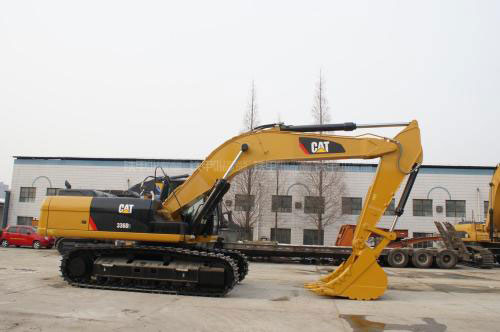


An excavator is heavy construction equipment with a bucket at the end of the connected boom, while the rotating cab is called a "house" and is located on top of a chassis system with tracks or wheels. They are specifically designed for digging soil, loading materials onto trucks and digging trenches. They are subject to harsh conditions and often operate in rain, sun, snow or muddy environments. Just like cars, trucks or any other construction equipment, proper routine maintenance is essential to keeping it in good working order.
Proper maintenance maximizes fuel efficiency and reduces operating costs and equipment failures. Due to malfunctions, excavators or other heavy equipment are offline every minute, causing loss of operator salary and productivity. Planned maintenance can help control these costs and maximize productivity.
An important part of all construction equipment maintenance is proper record keeping. It is helpful to keep this information current when assessing the life of your machine. If you need to discuss the problem with your dealer or manufacturer, accurate records will also help prove that the machine has been properly repaired.
Daily checklist
Before operating the excavator, take some time to perform a daily walk inspection. This inspection does not take much time, and if problems are found, costs can be easily recovered.
The following items should be checked before the operation:
Check to make sure there is enough coolant
Check engine and hydraulic oil levels
Check for leaks undercarriages and machines
Check the track (for more details, see Chassis system below)
Check the cooler to make sure there is no debris
Drain the water in the fuel/water separator
Dust collector checking the air filter
Make sure the bucket has teeth and is in good condition
Check the wear plate on the bucket
Lubricate all pins and bushes daily
Check controls and seat belts in the cab to make sure they work
Turn on the machine and check the controls, wipers, seat belts and air conditioning system
Remove trash and debris from the cab
landing gear
Chassis systems are an expensive part of owning and operating an excavator. When operating the machine, always work on the idler and dig on the excavator, not on the side or back of the excavator, and operate the machine as far forward as possible to avoid excessive wear. If the excavator needs to be left for a long time, start the machine every few months and operate the slide rails to avoid getting stuck on the pins.
The following should be checked to ensure proper orbital operation:
Look for loose bolts on the track and tighten if necessary.
Look for curved shoes on the track. The shoes support each other, one curved shoe will lead to other curved shoes.
Replace curved or damaged shrouds and rails at the bottom of the rails ("rock guides").
Inspect the sprocket and track rear-drive for oil leaks and make sure all bolts are securely in place.
Remove debris around the track and adjust track tension if necessary to avoid excessive wear
Make sure there are split pins in the main link.
Propulsion gearboxes are often overlooked, but they are an important part of machine performance. Depending on the excavator manufacturer, the gearbox oil should be changed every about 1,000 hours.